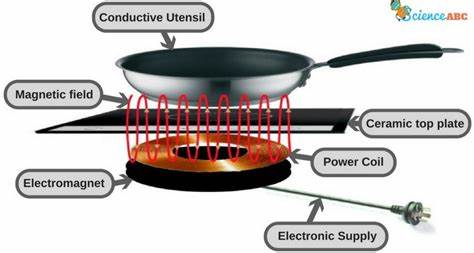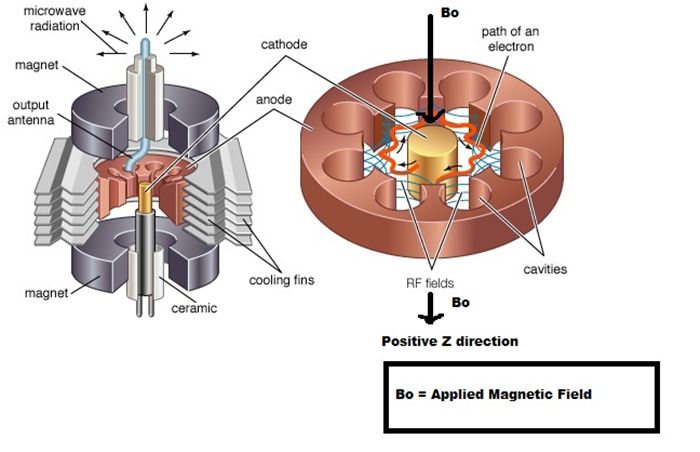Household applicances and Security Locks
Locks
=========
A lock of any kind is basically a smart bolt, one which, unlike a simple manual bolt or bat,
can be locked or unlocked only with the correct key. Mechanical locks ,which rely solely on
ingenious arrangements of pins , levers, cylinders, and springs, remain the standard type
in most homes, schools, and places of work; they are only gradually being replaced by
electronic locks.
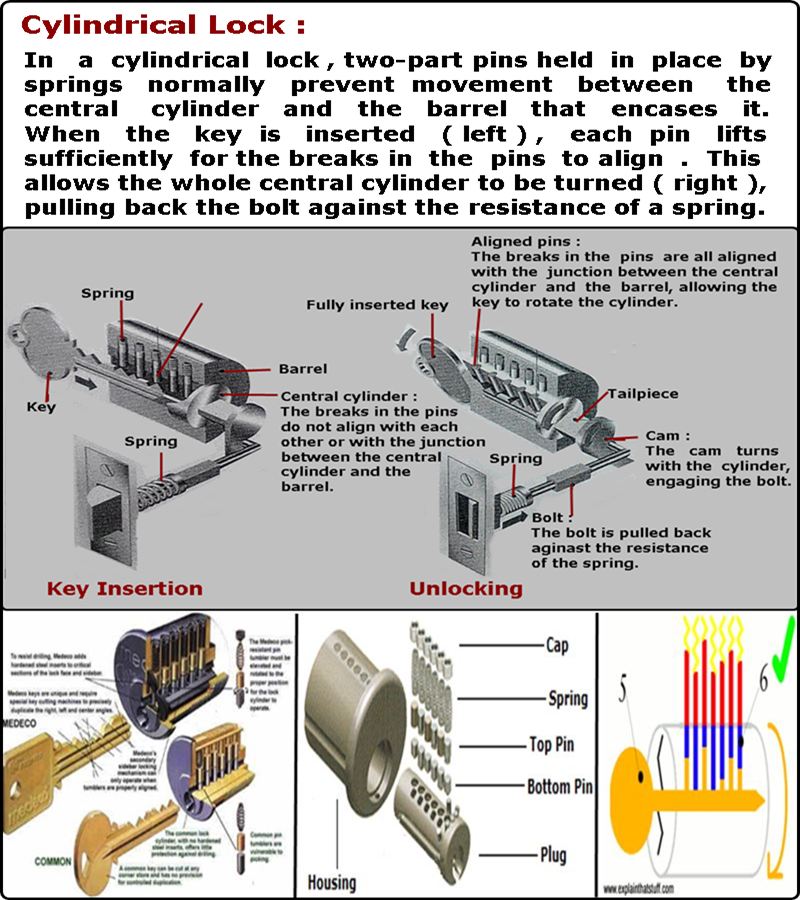
Locks (Part II : Triple lever and Brahmah-type locks)
============================================
Many familiar types of mechanical locks in use today have their origins going back several hundreds
or even thousands of years. The pin-tumbler mechanism seen in cylindrical locks; today the most
widespread lock in the world, was first used in the Middle East some 4,000 years ago. The first lever
lock was patented in 1778 by an English locksmith, Robert Barron, to improve on the moderate
security provided by the existing locks at that time. The Bramah lock was also invented in principle
during the late 18th century and was claimed to be unpickable. This remained the case for 50 years.
It is still in use today where high levels of security are required and for items that are left in the open
and vulnerable , such as bicycles,.
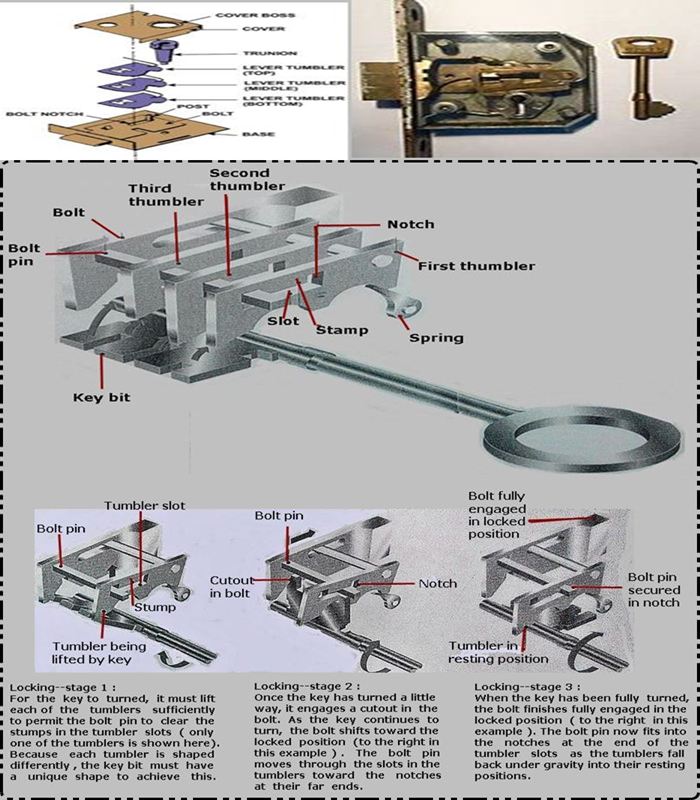
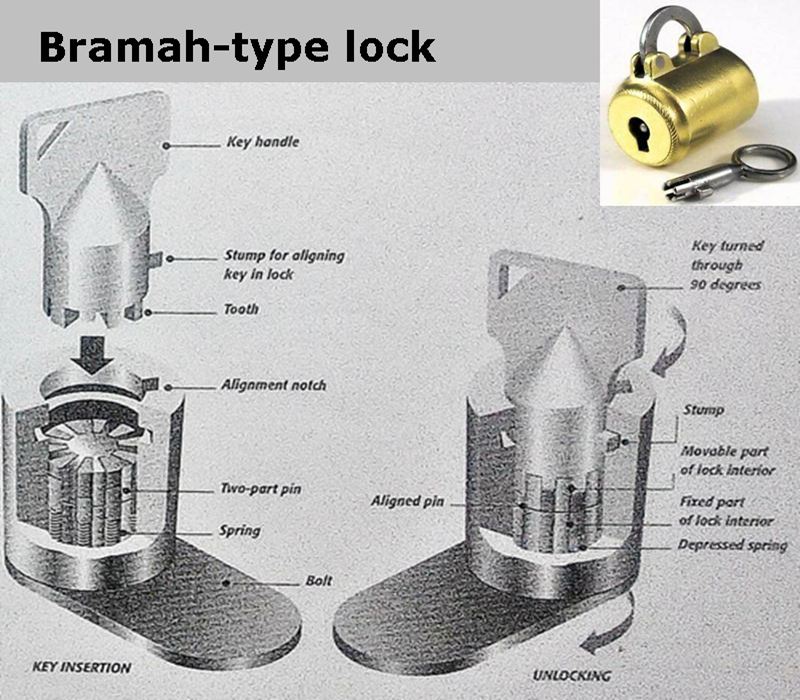
Washing Machine
================
The labor of washing clothes by hand was part of daily life all over the world until the mid-19th century.
At that time, inventors began to create primitive washing machines in which the clothes were agitated
when the user turned a crank by hand. Today's washing machines are motor driven and have electronic
timers that control the wash, rinse, and drying cycles automatically.
Washing machines for domestic use are available in top-loading or front-loading design. Front-loaders
are becoming fashionable because they use less water. In top-loaders the clothes are agitated by
spinning paddles to ensure maximum penetration of water and detergent. In front-loaders, sufficient
agitation is provided by the rotating action of a ribbed drum. A control unit containing a timer determines
when the water-inlet valves open. It also turns the motor on and off, regulates the speed of the drum,
activates the pump, and determines the temperature of the wash. Microchip technology allows several
sequences of operation, programs, to be stored in the control unit's memory, so that the machine can
deal with a range of fabrics. Today's washing machines work in combination with modern detergents,
which began to be developed in the mid-20th century. These synthetic chemicals lift dirt and grease from
fabrics with ease. They often contain additives such as fluorescent agents that make whites and colors
appear brighter.
Machine manufacturers also devised ways of drying clothes more quickly. Spin dryers, in which water is
expelled from the clothes through a rapidly-spinning , perforated drum, had appeared by the 1920s. In the
1950s, tumble dryers were introduced. These dry the clothes in a slowly rotating drum through which
heated air is passed. The hot air absorbs moisture and is then vented through a duct. The latest washing
machines include spin-drying and tumble-drying functions.
Front-loading washer-dryer :
--------------------------------------------------
When the timer switches on, inlet valves are opened, and water and detergent are sprayed into the
drum. When full, the drum rotates, washing the clothes. The pump removes dirty water. The valves
then admit clean water, rinsing the clothes. Rapid spinning of the drum forces water out of the clothes.
Finally, hot air dries the clothes.
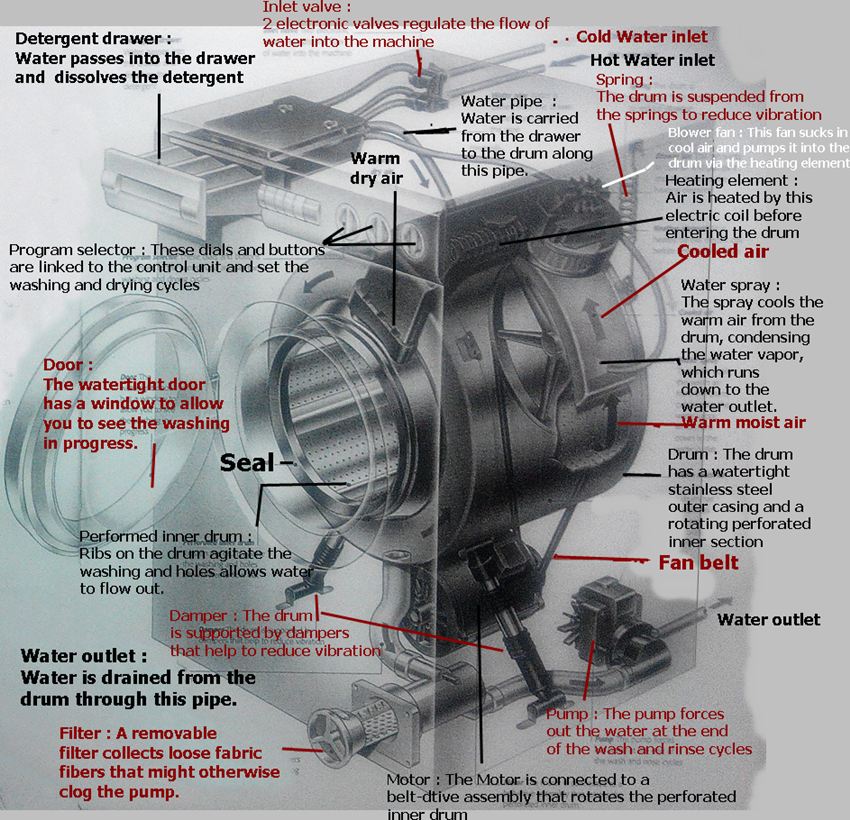
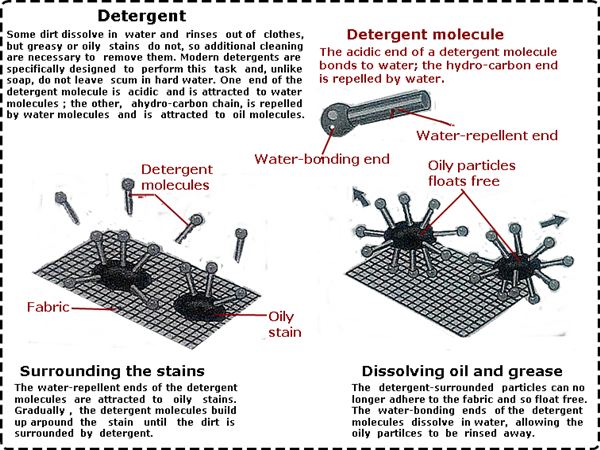
Fridges ad Freezers (Part 1 : Compressor )
=====================================



Fridges and Freezers (Part 2 : Expansion valve)
=======================================
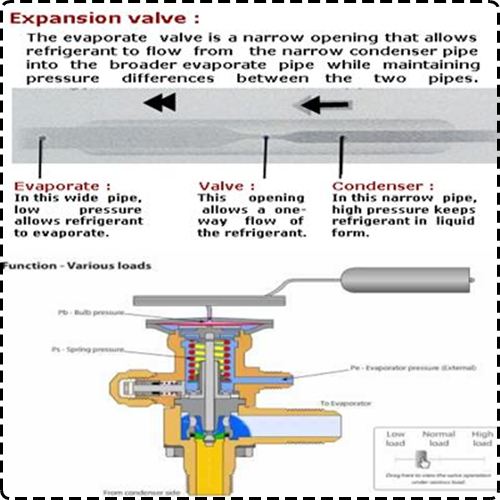

Fridges and Freezers (Part 3 : Vacuum flask and Ice-cube maker)
====================================================
Refrigerators are liquids with low boiling points, able to change between liquid and gaseous states
with ease at room temperature. Ammonia, an otherwise eminently suitable refrigerant, is toxic, so
less toxic chlorofluorocarbon (CFCs) were developed in the 1930s. Since the 1990s, CFCs have
been replaced by hydro-chlorofluorocarbons (HCFCs) and hydro-fluorocarbons (HFCs) , which are
thought to be less damaging to the Earth's ozone layer. Today,'s refrigerators store food at
temperature between 37 degree F (3 degree C) and 41 degree F (5 degree C). At these
temperatures, the activity of micro-organisms that cause food spoilage is slowed, but not halted.
Freezers maintain a temperature of about 0 degree F ( -18 degree C). Under these conditions,
micro-organisms cease reproduction and nearly all other activity , so spoilage of food is effectively
halted.
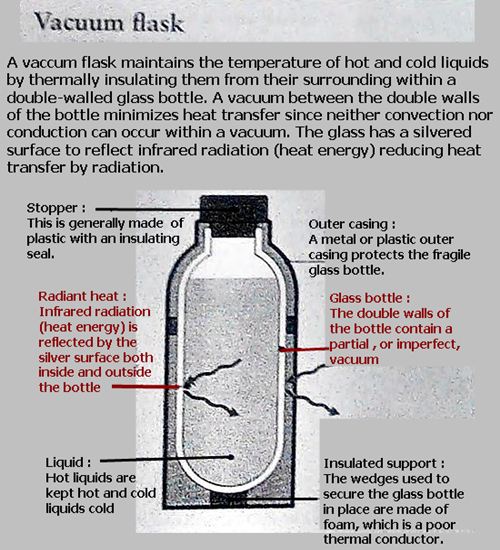
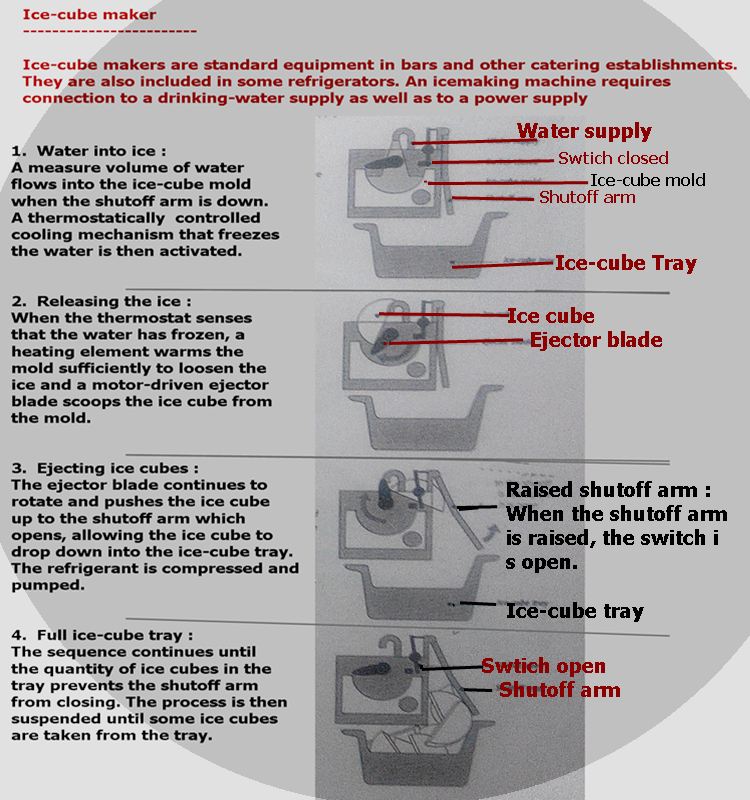
Fridges and Freezers (Part 4 : How refrigerator works )
=============================================
Refrigerators (fridges) and freezers are heat pumps. They move heat energy from cold
(low temperature) regions to hot (high temperature) ones, against its natural flow, further
cooling the cold regions. They work by compressing a substance called a refrigerant
and then letting it expand. Early fridges used ammonia as a refrigerant. Domestic fridges
today use different refrigerants, but operate in the same way.
Household refrigerator :
-----------------------------------
A refrigerator is a heat-transfer machine , which takes heat from inside the refrigerator
and dumps it outside. This is accomplished through repeated evaporation and
condensation of the refrigerant. Evaporation : changing state from a liquid to a gas
requires heat to take place, which is absorbed from the contents of the refrigerator.
The reverse change (condensation) : gives out heat, which is released from the
refrigerant to the outside of the refrigerator.
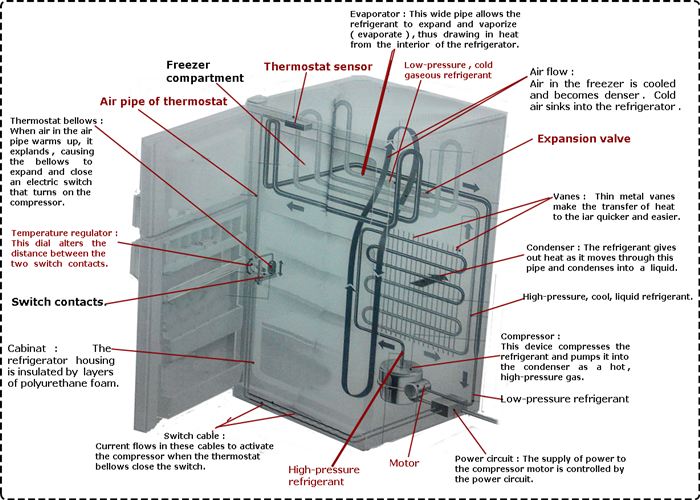
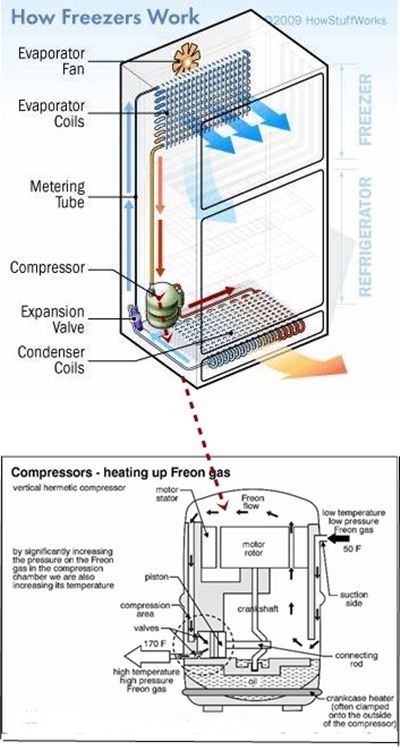
Vacuum Cleaners
================
A new bagless machine transformed domestic vacuum cleaning in the early 1990s .
British inventor James Dyson made one of the biggest breakthroughs in home cleaning
with his dual cyclone system since the first portable vacuum cleaner to be powered by
an electric motor was introduced in 1907. The Dyson cleaner replaces the traditional
porous bag with 2 cyclone chambers that spin the air to extract dust from it.
Conventional upright and canister vacuum cleaners use a fan to create a partial vacuum
and suck dirty air from carpets, rugs, upholstery, and bare floors through a paper or cloth
bag. Air passes through the microscopic pores of the bag but dust is left behind in the bag,
which can be disposed of later. Dyson's cyclone uses a spinning column of air instead of a
bag to extract the dust. It spins dirty air rapidly inside a drum, forcing dust outward to the
wall, just as water is forced outward in a spin dryer. The dust , separated from the air ,
collects in a plastic container.
As the bag in a conventional vacuum cleaner fills with dust, its pores become clogged so air
can no longer flow through so easily. This clogging reduces the power of suction. The dual
cyclone cleaner has no bag to clog, and retains its cleaning effectiveness.
Filtering systems in vacuum cleaners :
--------------------------------------------------
Household dust particles that cause allergy sufferers the most discomfort are less than
3 micrometers (0.003 mm) in diameter. They include molds, spores, pet dander, smoke particles,
and dust mite feces, all of which cause lung irritation and may cause an allergic reaction. In the
past, most vacuum cleaners made the household environment worse, not better, for allergy
sufferers. Fine particles were sucked out of the carpet, then expelled into the air as they were
too minute to be trapped by the cleaner's dust bag. The best modern machines have filters that
extract particles as small as 0.1 micrometer (0.0001 mm) from expelled air.
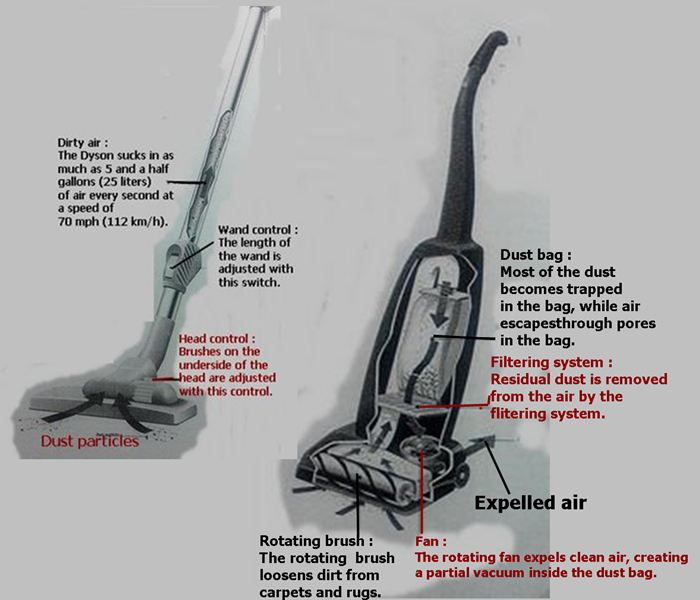
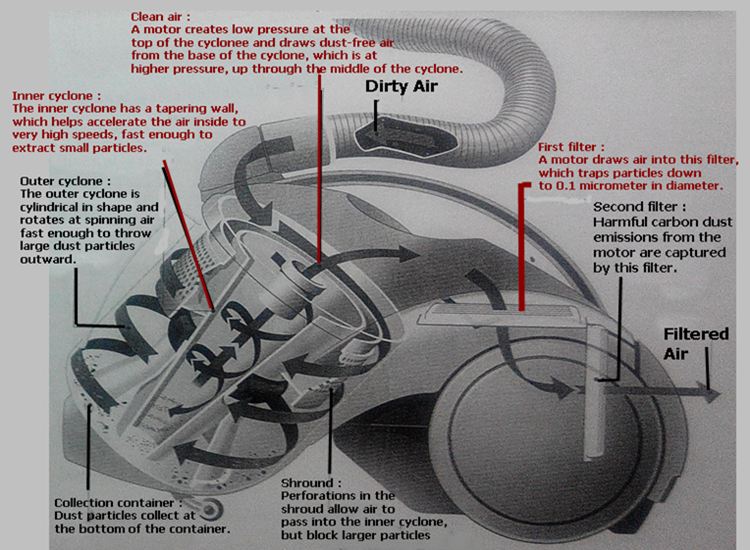
Stoves and Microwaves
===================
Since humans learned how to create fire, heat has been used to process food. In conventional stoves,
heat is generated either by a controllable gas flame or by electric heating element and is transferred to
the food by conduction. As over half the heat energy is lost to the environment by conventional appliances,
stoves have been developed that transfer energy more directly to the food.
The most revolutionary of these new cooking technologies is the microwave oven, which uses a device
called a magnetron to generate a type of electromagnetic radiation called microwaves. The magnetron
was first developed during WW2 for use in radar systems. It was soon discovered that microwaves
penetrate food where they cause water molecules to spin at high speed, generating friction, and thus heat,
which cooks the food very rapidly. At microwave frequencies (around 2450 MHz), electromagnetic waves are
reflected by metal , so they can be trapped within a metal box. But microwaves pass through most glass and
plastics, so these materials can be used to hold the food. The first microwave oven was patented in 1953,
but early models were too cumbersome for use in the home. Smaller and more efficient microwave ovens
were developed in the 1970s, and since then they have become increasingly popular both in homes and
restaurants.

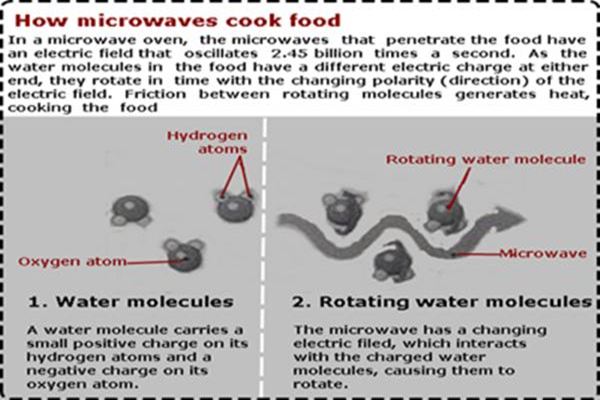
Induction stoves :
--------------------------------
Like microwave ovens induction stoves use varying electromagnetic fields to produce heat. An alternating
current passed through a coil in the heating element on the stovetop (the hob) produces a varying
magnetic field , an effect known as electromagnetic induction. If the pan on the hob is made from a conductive
material, the changing magnetic field in turn induces an alternating current in the material of the pan. The
electrical resistance of the pan's material to this current causes the pan to heat up, cooking the food . Since
there is no direct transfer of heat from the hob to the pan, there is also none of the heat loss that thermal
electric and gas stoves produce. As well as being energy efficient, induction stoves are easy to control.
